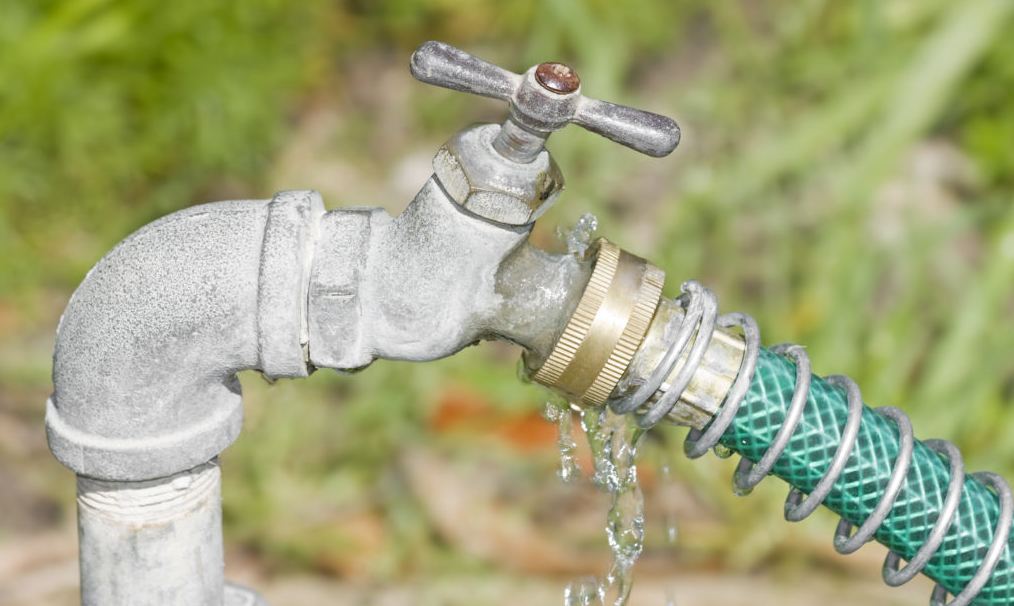It’s important to disconnect garden hose in summer to prevent it from fusing to spigot this winter

MACOMB, Ill. — I’ve been there. It is late fall and there is a hard freeze about to hit.
A wise gardener once warned leaving a hose connected to a spigot during a hard freeze could lead to disaster. As water freezes, it expands. Any water trapped in the nozzle or spigot could expand to the point it bursts the solid metal or plastic construction of our treasured watering devices.
Or worse — freezing water could creep back into the house and burst a pipe indoors. Now we’re in big trouble.
It happens to me every fall. The sky is a cold cloudy dark swirl, with winds whipping through the landscape that will clear the overcast sky at night letting all that heat escape into the atmosphere, thereby dropping temperatures below freezing. My fingers are nearly numb, as my body, now acclimated to the warmth of summer, struggles to switch into winter mode. Grasping the icy metal hose connection threaded onto the spigot, I twist — only to find it will not budge.
Over and over again I try with no luck. The cold turns painful as my hands turn redder by the second.
It’s time to take it up a notch. Tools! Pliers, to be exact, because I can’t find my large channellock. The biggest set of pliers I own still isn’t quite big enough to grip the hose connected to the spigot. The pliers slip and tear apart the soft aluminum hose connector.
This isn’t working. It’s getting dark and colder. Time to step it up. I ask YouTube. After watching some videos of what not to do, I am now terrified I will snap off the spigot with too much force. Maybe I won’t use my 10-pound pipe wrench.
At this point, you may be thinking, “Just take the spray nozzle off the other end and drain out the hose.”
That’s a great suggestion, the only thing is my nozzle has been fused to this hose for years. Plus, with the airtight seal at the spigot, there will still be water trapped in there.
Back to the spigot connection.
I hit the connection with penetrating oil, then give it a couple of firm taps with the pliers. Still nothing. Suddenly, my son bursts from the house holding those beautiful blue-handled pliers. The hose is saved. The tongue and groove pliers create the perfect bite, allowing me to twist carefully but with more
force than the pliers. With a few twists, the hose is off the spigot.
However, after all that, the fitting is damaged beyond repair. All that work for a ruined hose.
Why hose connections fuse is based on the metal fitting connectors and water. Most low-cost hoses
have aluminum fittings, and most spigots are brass. These are two dissimilar metals that will physically
fuse when water is introduced and flows through the point of connection. This process is called galvanic
corrosion.
The moral of the story? It is summertime, and it is dry, which means you are using your hose a lot. It also means it is important to disconnect that hose from the spigot and any watering nozzles to prevent them from fusing.
Or purchase hoses with brass fittings if your spigot is brass. Got a plastic spigot connection? Buy a hose with a plastic fitting. Can’t find these? It’s pretty simple to cut off the end of a hose and replace it with a higher-quality fitting. Most hardware stores have brass fittings (or your material of choice) and hose clamps to fasten them to the cut end.
Our hard freeze may seem like a long way away, but remember to disconnect your hose at least once a month so you too don’t wind up outside fighting a fused hose connection.
Miss Clipping Out Stories to Save for Later?
Click the Purchase Story button below to order a print of this story. We will print it for you on matte photo paper to keep forever.

